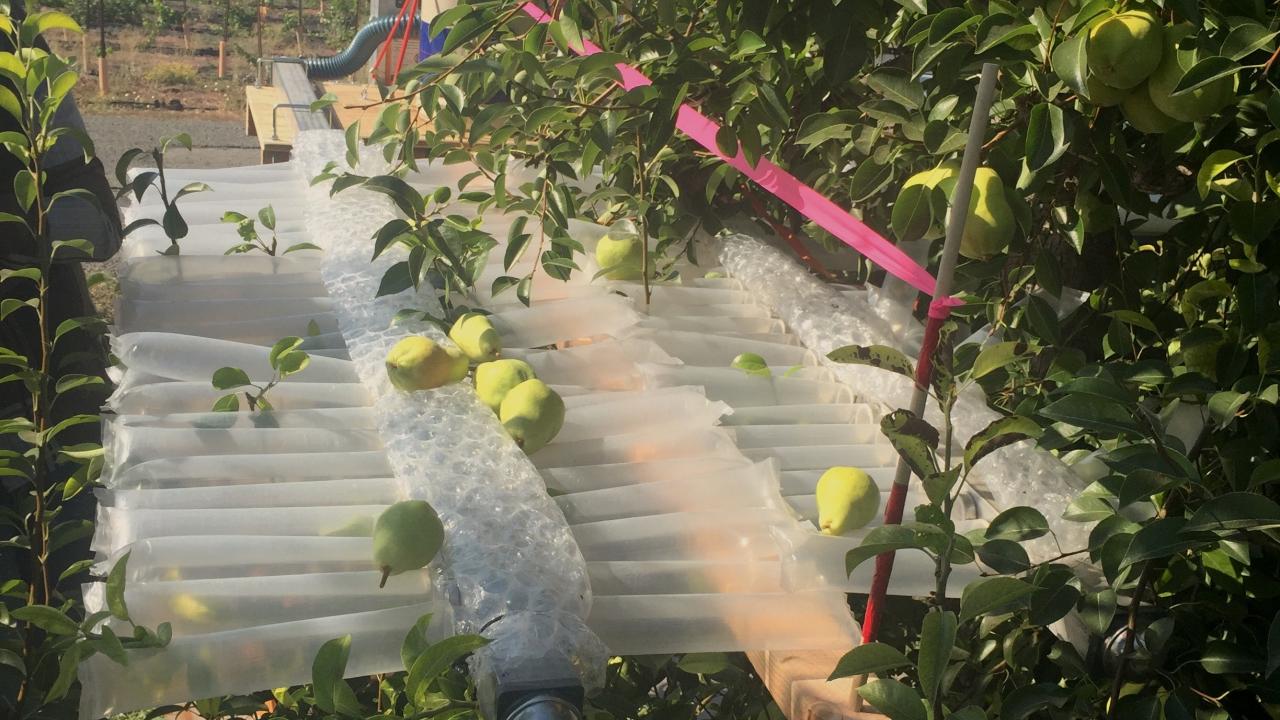
Plant scientists assist on NIFA project to create a shake-and-catch harvesting system for soft fruits
Assistant Professor Brian Bailey and Cooperative Extension Specialist Elizabeth Mitcham, both of the Department of Plant Sciences, are assisting on a project to create a mechanized shake-and-catch harvesting system for soft fruits without fall damage.
The project received $400,000 by the National Institute of Food and Agriculture and is led by Stavros Vougioukas of the Department of Biological and Agricultural Engineering. The goal is to develop a machine that’s comparable to the quality of hand-harvesting while being fast and efficient enough to meet the needs for timely harvesting.
While shake-and-catch systems—whereby some mechanism shakes a tree to collect fruit or nuts in bins––have been available for years, they can’t harvest fresh-market soft fruits like peaches and pears. This is because these types of fruits are damaged by the fall and therefore have to be picked by hand.
“If you are shaking a tree and you have fruit at 12 feet, the fruit has maybe traveled 10 feet to a catching surface near the ground and the probability that it will have hit something is very large,” explained Vougioukas. “But, if you could insert soft catching surfaces every two feet, then fruits would only fall for two feet and we could significantly reduce damage from collisions.”
To do this, Brian Bailey is building a computer model that simulates both the structure of a tree, such as its branches and canopy, and the interference between these structures and a given harvester design. These simulations will help them optimize the design and minimize trial and error before field tests.
“Prototyping harvester designs is both costly and time-consuming,” said Bailey. “Creating computer-aided design tools can dramatically accelerate the innovation process and allow for a formal optimization of the design.”
Postharvest expert Elizabeth Mitcham will assess the quality of machine-harvested fruits, specifically as they compare to those harvested by hand. After one day from harvest, she will examine the fruits for quality issues, such as bruises.
“Our goal is to make sure the appearance, quality and storage-life of the fruit is not noticeably affected by any part of the mechanical harvest,” said Mitcham.
Ultimately, the team aims for these machines to be used in the orchard when the necessary number of human workers are unavailable due to labor supply, costs, or public health measures.
(Article adapted from the original by Noah Pleuger-Peters, with edits and additions made by Matt Marcure)
